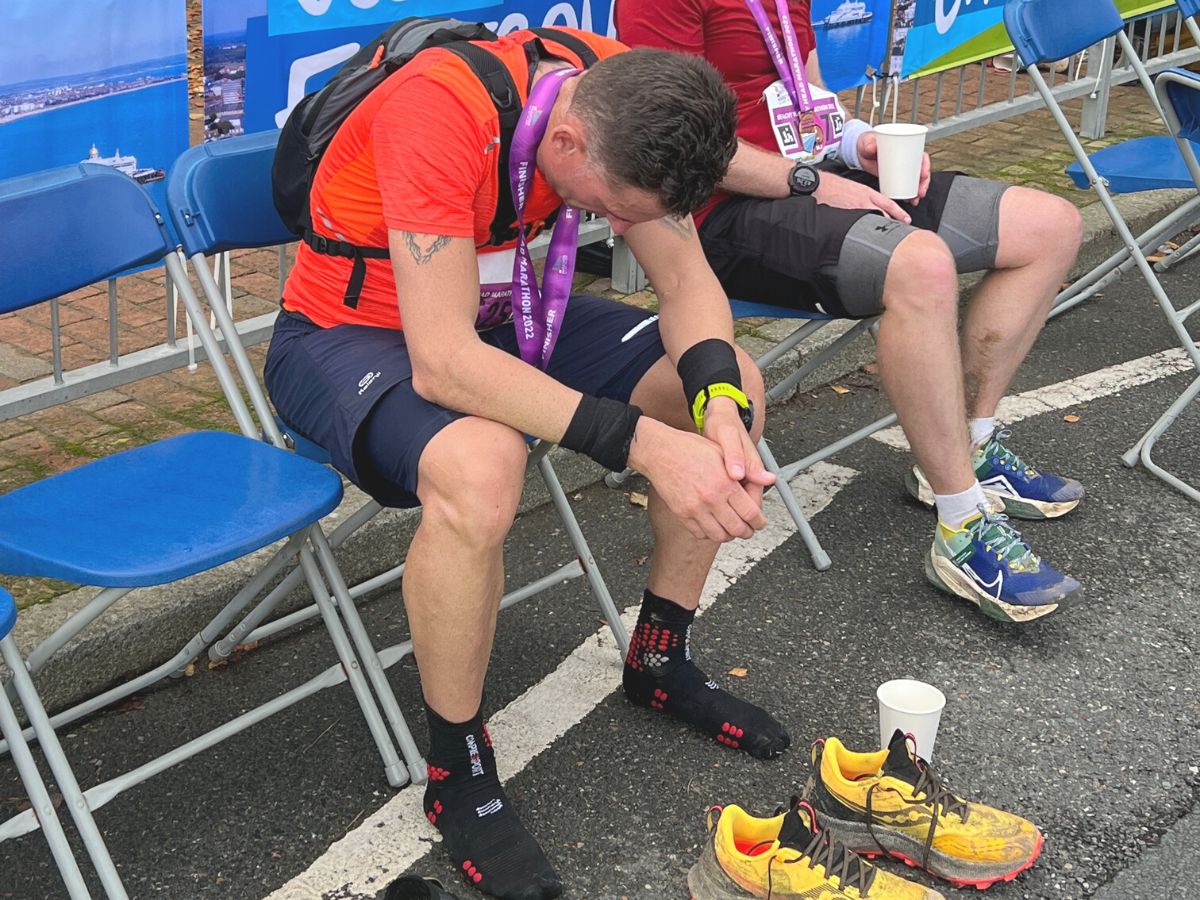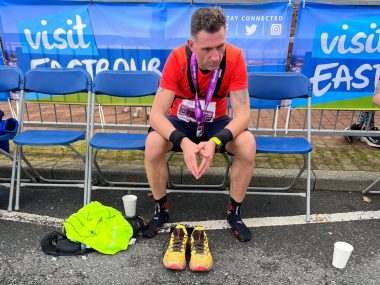Get in touch
Thanks for getting in touch

For the Love of Pain and Suffering
“Everything you ever wanted to learn about yourself, you can learn in 26.2 miles”
Lorni Culnane
“Everything you ever wanted to learn about yourself, you can learn in 26.2 miles”
Lorni Culnane
I was done . . . spent . . . empty . . . pissed off, with everybody, especially myself, and as a result was questioning why?
Why I was here and what was the point of all of this.
Keep going, stop, walk, run, come on, your weak, No I’m not.
Jeeez Man, this is tough.
For 20 years I was a professional footballer, so pushing my body to its limit was a daily part of life. Now a recreational runner, I run marathons and ultramarathons, totalling over 30 now, and although each run is uniquely different, easy in some ways and harder in others, with subtle differences in the weather, (I live in the south of England where I can be running in warm sunshine on one day, driving rain on another and snow on another, all in the same week), energy levels, mood, motivation and the terrain and profile of each run, all interacting differently to create a unique experience.
I have run many different marathons including running up a mountain in Spain, a marathon of repeat hill runs up the stunning Box Hill in Surrey (famous for being a mecca for cyclist in the south of England), a full marathon on a treadmill (which was mind-bendingly boring), 2 marathons on consecutive days, all tough in their own right, but expected, there is however one run that stands out from the others in terms of its mental and physical challenge. It stands out for many reasons, one being that it wasn’t even a marathon distance. It was a 21-mile run on roads in Cranleigh, Surrey, an organised event that consisted of one 9-mile loop followed by two 6-mile loops. Many use it as the longest training run of their London Marathon training programme so as a result it is always busy.
One of the immediate issues was that there was an option to stop after the first 6-mile loop, making it a 15-mile run, the extra loop wasn’t compulsory, which immediately creates an internal dialogue during the first loop,
“I could stop at the end of this lap”.
“My legs are hurting”.
“This is tough”
“I’m tired”
The option to simply stop an activity and therefore the pain, always creates an issue, just like cold water exposure first thing in the morning, this internal reasoning can be exhausting, but it’s also fascinating.
I’ve always been interested in psychology of running, and the methods athletes use to get through tough times. Interested in the two methods regarding pain and suffering, and this is especially true with endurance athletes.
The first to distract as much as possible with music, podcasts, or other external influences, or to think about other things internally to distract from the discomfort.
The second is to focus on the pain, feel it, embrace it and work alongside it, cutting out all other distractions both internal and external.
Why is this important?
There are obvious parallels between this ability to endure and our ability to cope with the pressures and stressors of life, which I now see, or don’t see as the case often is, on a daily basis as a Goal Setting and qualified Life Coach.
Life is tough for everyone, not all day every day, but in varying amounts and degrees, coping with the challenges of long-distance running is a form of resilience training for life, both physical and mental.
If we can physically see the endpoint of a goal, like the finish line of a 100m run, then focussing on that point with no distractions is the best method, but, in the case of many life goals, and a marathon, the end point can’t be seen visibly until the very end, it can only be visualised. Motivation will increase at the end, just look at marathon runners all sprinting the last final few metres. The Goal Gradient Hypothesis
One issue with visualisation of goal achievement is that we often haven’t completed the goal previously, so there is no anchor point of success, just a perception of what it will feel like to succeed, making it even harder to use as an emotional motivator.
For any goal where we cannot physically see the endpoint, we need more than just a visualisation of that endpoint.
For me, I scroll between 3 motivators, all requiring focus linking the suffering to the ‘Cause’ and the ‘Why?’
Visualisation of the endpoint – the vision that ignited the goal
Focus on the next steps – Break it down into micro goals
The human connection – My Why? – The people I love, visualise failing and how that would be failing them too.
This links a method to the suffering.

In practice, I would be breaking the process down into small, ‘micro steps’ or ‘micro goals’, so in the case of a marathon, I would be getting to the 5K mark, then 10km, then half marathon point, when I am really struggling, limbic friction is at its highest, I would focus on getting to the next corner, or lamppost or the next 1 km marker, if I tire of repeating this, I move to visualisation of the endpoint, and next visualise the human connection – there will be one – I run for my wife and kids.
Scrolling between these methods will allow me to maintain focus, shut out distractions, and improve resilience, ultimately to keep going.
So, I believe we need to use these methods and scroll between them.
I’ve do sometimes listen to music but have long since given up on listening to dance music of 125 beats a minute when I run, now favouring music that takes me to darker places with which I find links well to physical suffering.
The fine line between success and failure and the fear that has to be embraced to get close to that line, is represented in physical pain and in music.
“I’m my darkest moment”
“Against my will I stand beside my own reflection“
“Once again I’m drawn towards oblivion”
“My shadows the only one who walks beside me”
“Pleasures remain, so does the pain, words are meaningless and forgettable.
“I’m not looking for absolution, forgiveness for the things I do, but before you come to any conclusions, try walking in my shoes.”
There is a final addition to make, that I have an unyielding belief in my confidence of completing/achieving my goals.
Regardless of how much or how little training I have done in preparation for an event. If I start, I always feel that I will finish.
Ultimately, there must be a connection, and the stronger, the connection, the greater the resilience we can show by overcoming resistance. Often the strongest connections have a human element.
This method will soon be put to the ultimate test.
In July this year I undertake my toughest calling to date
Running around Scotland’s NC500
516 miles of coastal roads
15 ultramarathons in 15 days
Averaging 35 miles a day
For the Love of Pain and Suffering
Note: I will be running the NC500 for Mind & Mental Health UK
For sponsorship of the Charity or the event please drop me an email – nicky@nickyforster.com
Insta: nickyforstercoaching
Song Lyric Credits
“I’m my darkest moment” – Fool for Your Philosophy – The Slow Readers Club
“Against my will I stand beside my own reflection“ – Crawling – Linkin Park
“Once again, I’m drawn towards oblivion” – Lunatic – The Slow Readers Club
“My shadows the only one who walks beside me” – Boulevard of Broken Dreams – Green Day
“Pleasures remain, so does the pain, words are meaningless and forgettable” – World in my Eyes – Depeche Mode
“I’m not looking for absolution, forgiveness for the things I do, but before you come to any conclusions, try walking in my shoes.” – Walking in my shoes – Depeche Mode